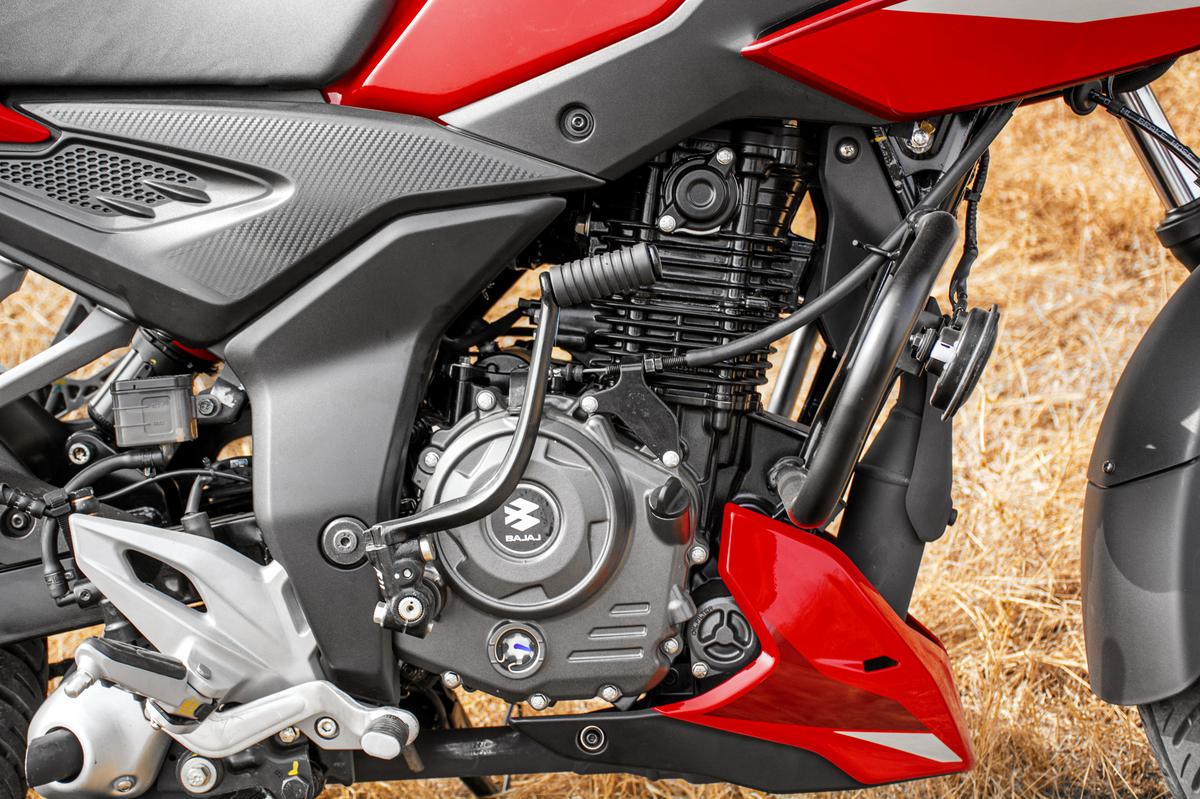The Indian automobile market is challenging for a number of reasons, one of which is people not wanting to move. This is one of the reasons why so many variants of the cars remained unsold despite being launched with better replacements.
It is the same with motorcycles, some of the best of which are in the 150-160cc space. For example, Honda had to put significant effort into making the new-gen Unicorn look like the old one because customers refused to accept the Unicorn 160 when it was first launched. Another prime example is how successful the older Apache RTR 160 2V was in the northern and eastern markets, selling it alongside the much better RTR 160 4V.
Same story with Bajaj and its new-gen Pulsar N160, which is on sale. Market demand meant that the company had to make a new Pulsar 150 as well. It gets a new chassis and engine, all in an effort to make a bike that is more commuter friendly than the N160, and yet sporty.
This Pulsar looks similar to the Pulsar N160 and N250 as it shares the same body panel as those two bikes, the only difference being the headlamp design (an LED projector headlamp, which is good). There is also a small cowl that shades the simple, but good looking ‘Infinity’ instrument console that debuted on the 250 Pulsar.
The primary objective with the Pulsar P150 was to make it a simpler, more comfort-oriented motorcycle than the N160, which Bajaj went all out to achieve. The chassis has a new design with the specific intention of reducing weight. At 140 kg (141 kg for the dual-disc model), the bike is 9 kg lighter than the older Pulsar 150 and 14 kg lighter than the new Pulsar N160. Some of this weight reduction comes from the chassis, engine and the fact that it holds a liter less than the older 150’s 14-litre fuel tank.
On the go, the P150 feels light and nimble, but not jittery or skittish. This means maneuverability in traffic is excellent, but if you decide to take some corners, you’ll notice it has better handling. It’s not sharp and sporty, but the heavy and somewhat disconnected feel of the old Pulsar has been consigned to the history books. Braking performance is also adequate, with a sluggish initial bite at the front (typical of bikes in this category) but reassuring performance once you pull the lever further.
Bajaj’s decision with rider ergonomics is interesting. The split-seat variant comes with a set of clip-on handlebars and instead rear-set foot pegs that put the rider in a more committed riding position than expected. This seems odd, given the bike’s status as a more comfort-oriented machine. Especially since the suspension on bad roads is softer and plusher than the N160, which gets a one-piece handlebar.
It also comes with a taller, flatter single-piece handlebar that keeps the rider in a more upright and comfortable position (the foot pegs are also set more comfortably). The only downside is that you get a rear drum brake (the split-seat variant gets a rear disc) and a slimmer rear tire (100-section vs 110 on the twin disc model). Still, it’s a compromise I’ll make for the comfort I’d expect from a more practical Pulsar.
The P150 gets a new engine that takes its cues from both the old Pulsar 150 and the new 160 but with a difference. This air-cooled engine uses the same 56 x 60.7 bore x stroke ratio as the older Pulsar 150, but with the new architecture seen in the N160. This means that it gets the new-age refinement that has become the hallmark of the new Pulsar and this motor is way ahead of the old Pulsar in this respect.

With 14.5hp and 13.5Nm, it’s not that much more powerful than the old 150 and makes it around 1.5hp/1.1Nm less than the N160. With a 0-60 time of 6.3 seconds and a 0-100 time of 21.13 seconds, the Pulsar P150 isn’t the fastest bike in the segment, but that doesn’t matter much, given its practical role as a fast and comfortable urban commuter Happened. And to the credit of the engine, this is where it performs at its best.
Like the new N160, the fun is in the low- and mid-range segments. The engine pulls well at almost any point in the rev range and when it redlines at around 9,500rpm, you won’t want to go that high. It’s all about effortless city performance, something that is evidenced by the fact that you can ride at 30 kmph in fifth gear without a hint of protest from the engine. Bajaj says that its internal tests reveal an overall real-world fuel efficiency of 49kpl, which is not too far off from our test results, where we got 48kpl on the highway (speeds between 65-75kph) and in our city In testing the 43kpl got through generally dense. Mumbai traffic.
While Bajaj doesn’t exactly lead the charge when it comes to feature-packed motorcycles, it does offer something worthwhile like the LED projector headlamps. It’s a segment earlier and works well enough, but not as well as the unit on the N160. There’s no Bluetooth connectivity, but you get a conveniently placed USB charging port as standard, and the bike comes with single-channel ABS.
The single-disc model is priced at ₹1.17 lakh and the twin-disc at ₹1.2 lakh (ex-showroom), making them ₹6000 to ₹10,000 cheaper than the Pulsar N160 and more affordable than the TVS Apache RTR 160 2V – Trying to compete with The Motorcycle. Will Bajaj be able to pull it off? Only the time to come will tell.